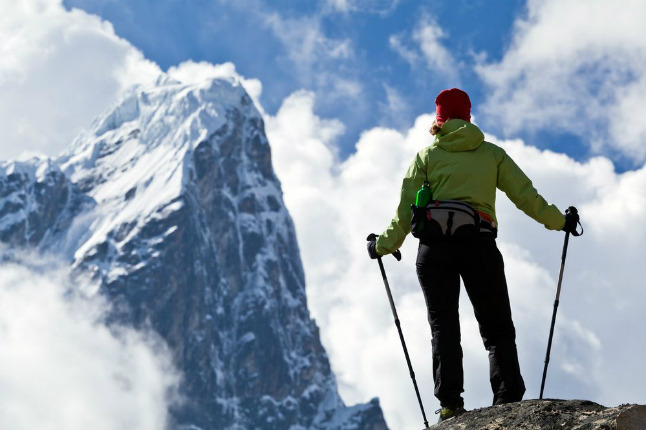Altitude Sickness 101: 6 Essential Safety Tips
After three seasons volunteering at a 14,000-foot rescue post in Nepal, Dr. David Shlim moved to Kathmandu to become the medical director of the CIWEC Clinic Travel Medicine Centre. During his years abroad, Shlim saw countless cases of acute altitude sickness and now encourages every traveler to understand the symptoms and act accordingly.
"In my experience, everyone underestimates the first case of altitude illness and sometimes it leads to much more serious consequences than would otherwise happen," he said. Although symptoms may start as a light headache or nausea, death is all too common when a person ignores the signs and continues his journey.
For this reason, anyone who loves the outdoors should know the warning signs of altitude sickness, as well as follow a few rules when sleeping above 6,000 feet. (That's right: you don't need to be climbing Everest or hiking your first Colorado 14er to be at risk.)
To help you prepare and have a safe journey, Shlim offered the following suggestions.
Talk About AMS Before You Leave
Everyone on your trip should know the symptoms of altitude sickness—difficulty sleeping, dizziness or lightheadedness, fatigue, headache, loss of appetite, nausea or vomiting, rapid pulse, shortness of breath—as well as the life-threatening consequences of the condition. You should also have a frank conversation about your priorities before you leave. Everyone should understand that it's ok to get altitude sickness and that accommodating people when their symptoms begin is easier than rescuing them off a mountain.
Choose a Reasonable Schedule
Sometimes failure can be built into an itinerary if a hike or expedition moves too fast. Flexibility is key to avoiding altitude sickness because, if someone shows any symptoms, you can stay back a day. The importance of rest days was shown in the 1970s when guides leading the classic Everest base camp trek cut down the number of people suffering from altitude sickness from 60 percent to 30 percent simply by adding two rest days.
Consider Taking Diamox
"Depending on your itinerary, Diamox is like an insurance policy for your trip," Shlim said. Although side effects may include increased urination and pins-and-needles feelings in your extremities, the drug is "enormously safe" and will help you acclimatize—not just cover up your symptoms.
Because Diamox is related to sulfa drugs, Shlim recommends that anyone with a sulfa allergy take a dose or two at home to test the body's reaction to the drug before a trip. This way, you can avoid an adverse reaction while at altitude.
Avoid Exercise on Your Days Off
The last time he was in the Everest region, Shlim saw people taking acclimatization hikes on their rest days. "It's counterproductive because exertion can bring on altitude illness," he said.
Check In During The Trip
If you're unsure about someone's condition, ask. While a hiker may be lagging behind because of a bad knee or skipping meals because he doesn't like the food, these symptoms are often a sign of AMS. This is particularly important with headaches—what Shlim calls the "hallmark symptom" of altitude sickness. This sign is often ignored if someone has a history of headaches or allergies, or think they're dehydrated. However, it's always best to err on the side of caution.
"You can't go wrong waiting for your headache to go away before you go to a higher altitude," Shlim said.
Don't Buy Into the Hydration Myth
"Some people feel you can counter the effects of altitude illness by hydration," Shlim said. "Although adequate hydration will contribute to making you feel better, there's no evidence that over-hydration or adequate hydration will prevent altitude sickness." Over-hydration can even be dangerous, he added. By drinking too much water, you can suffer from hyponatremia. This condition, in which sodium levels become too low, can lead to death.
–
About the expert: Dr. David Shlim has served as the medical director at the Jackson Hole Travel and Tropical Medicine Clinic since 1998 and is the president of the International Society of Travel Medicine. He was also the Medical Director of the CIWEC Clinic Travel Medicine Centre in Kathmandu, Nepal from 1983 to 1998. He is also the author of Medicine & Compassion. To learn more about Shlim, visit his website.
